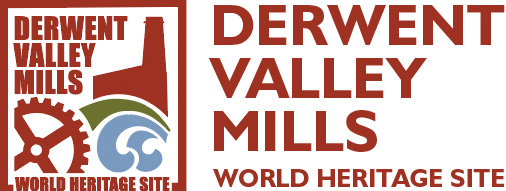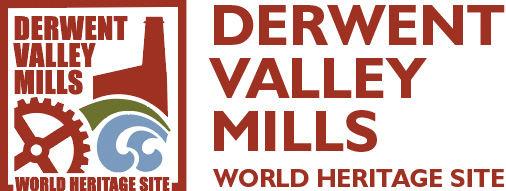The Landscape of the Derwent Valley

The Landscape of the Derwent Valley
The landscape of the Derwent Valley is special; it is where the gentle lowlands of England meets the rugged uplands of the Peak District. This gives rise to an outstanding diversity of landscape, geology and wildlife characterised in the north by open upland pasture and large expanses of steep-sided woodlands hugging the hillsides. Travelling south the valley broadens to a more open landscape with riverside meadows until it is edged by the urban landscape of Derby.
This dynamic landscape was recognised by early industrialists who harnessed the power of the River Derwent to create the first factories in the world, stamping their authority on the landscape and leaving behind a legacy of historic mills dotted throughout the valley. Much of the area now forms part of the Derwent Valley Mills World Heritage Site (DVMWHS).
The Valley is also exceptionally rich in wildlife, with internationally important ash and oak woodlands, and an abundance of wildflower-rich meadows and pastures. Wetlands associated with the rivers and streams also provide breeding and wintering habitat for many birds and other species.
The Landscape Character
The area covers 15 miles of a dramatic and attractive river valley dominated by open upland pasture, patterned by dry stone walls, steep sided ancient woodlands interspersed with upland heath and small fields and riverside meadows with hedgerows enclosing pasture and wetlands.
The valley is the birthplace of the factory system which produced a fascinating series of large historic mills, historic parks and gardens, woodland and model farms and associated settlement and transport system.
This combination of this distinctive scenic landscape with its unique cultural heritage imparts a strong and unique sense of place.
The landscape character types are defined by broad tracts of landscape that have a unity of character. The character is a mix of physical and cultural landscape attributes such as tree cover and settlement pattern.
Physical and Natural Landscape
In the north the River Derwent carved through the Carboniferous limestone to create the dramatic scenic gorge at Matlock Bath and additional water forces formed the steep dale of the Via Gellia. The steep wooded limestone dales and slopes are overlooked by a plateau of pasture enclosed by dry stone walls with isolated small field barns. This is the landscape of the White Peak.
Water courses meet at Cromford and proceed southward through the Millstone Grit creating steep valley sides to Ambergate before widening out into a more gentle and spacious valley through Belper and onto Derby. Again the landscape is dominated by wooded slopes and valleys overlooked by localised areas of gritstone heaths and commons and small patches of enclosed moors and heaths. This is the landscape of the Derbyshire Peak Fringe and Lower Derwent.
Riverside meadows occur along the river with localised variations such as valley width due to the distinct geology and topography.
These distinct national landscape character areas (White Peak and the Peak Fringe and Lower Derwent) form the spatial framework for the landscape and natural heritage of the project area. They have been sub divided into more detailed ‘landscape character types’ which will inform the project as necessary e.g. hedgerow planting species mixes.
The White Peak
“ …it was veined with a network of old stone walls, dividing the fields, and broken here and there with ruins of old lead-mines and works. A sparse stone farm bristled with six naked sharp trees. In the distance was a patch of smoky grey stone, a hamlet……stone fences under the sky, looking for the curves downward that indicated a drop to one of the underneath, hidden dales.”
DH Lawrence ‘The Virgin and the Gypsy
The Cultural Landscape of the Derwent Valley
In part of this dramatic landscape is the little known ‘Duffield Frith’ a former Medieval Forest with deer parks. Some of its remains form part of the rich historical character of this landscape however little is known about the woodland archaeology.
However the most dramatic cultural historic landscape impact on the valley happened in the 18th Century as this was the birthplace of the factory system which successfully harnessed water power for textile production. This resulted in a fascinating series of large historic mill complexes, including some of the world’s first ‘modern’ factories. Associated with this the wealthy landowners created 18th and 19th Century historic parks, woodlands and model farm complexes. This distinctive and unique cultural, international and historic landscape has been recognised internationally and designated as The Derwent Valley Mills World Heritage Site (DVMWHS), inscribed by UNESCO in 2001.
In tandem with the explosion of industrial development in the valley, associated settlement expanded with the creation of workers’ cottages and houses, chapels and schools, and the first transport systems developed north to south along the river valley. The Cromford Canal was the first insertion in 1794, followed by the turnpike road of 1818, and finally the railway line of 1840, extended to the north in 1849. These changes impacted significantly on the rural landscape. The Cromford Canal, created by Jessop and Outram became a major landscape feature which is now a biodiversity asset and tourist attraction. The Derby to Manchester mainline railway still runs through the entire length of the project area, although now terminating at Matlock as a result of the Beeching cuts of 1968. The resultant branch line is still an essential commuter and tourist asset. Although none of the earlier station structures survive from the 1840 route, later stations at Cromford and Matlock Bath still retain their original charm and contribute positively to the landscape.
The turnpike road of 1818 was built by the cotton manufacturers Strutt and Arkwright, to allow easier access for raw materials and finished goods to and from their mills. This is now the A6 road running north to south along the valley. As with the railway 20 years later, considerable impact was made on the valley when the road was created, with the creation of embankments, cuttings, walls and toll buildings.
Settlement was restricted by the topography but Matlock Bath developed as an attractive Georgian spa town due to the presence of limestone spring water, a scenic gorge and riverside location. Its popularity grew considerably with the opening of the railway in 1849.The narrow gorge restricted development at Cromford but at Belper the town grew significantly, thanks to a mix of industrial developments aided by substantial quantities of water power provided by the Derwent. These are attractive heritage rich settlements that contribute to the distinct and unique character of the landscape in the project area.
The low levels of modern industrial and residential development in the valley have minimised the impact on this landscape compared to many other areas today. In heritage terms the landscape may be described as a ‘relict’ industrial landscape where late 18th and early 19th century industrial development may still be seen in an 18th /19th century agricultural landscape containing evidence of other early industrial activity such as lead mining and smelting.
This lack of modern impacts and the strong natural and heritage character result in the unique landscape of the Derwent Valley we see today.
Summary of Designations
The summary below of the many heritage (natural and cultural) designations demonstrates just how important the Lower Derwent Valley is.
The Derwent Valley Mills World Heritage Site – The only World Heritage Site within the East Midlands.
- 19 Scheduled Monuments
- 7 registered Historic Parks and Gardens
- 21 Conservation Areas
- 899 sites or features listed on the County Historic Environment Records (HER).
- 582 Listed Buildings
Natural Heritage
- Woodland designated as a Special Area for Conservation i.e. Matlock and Via Gellia woodlands
- Gang mine Special Area for Conservation near Wirksworth
- Internationally important for its Calaminarian grassland type (lead rich grassland)
- 8 SSSIs
- 8 Local Nature Reserves (LNR’s)
- 108 Local Nature Reserve Sites including 91 wildlife sites and 17 geological sites
- 39 sites on the Forestry Commission Ancient Woodland Register
- 5 Derbyshire Wildlife Trust Nature Reserves
- 12 Habitat types identified as UK and Local Biodiversity Action Plan (BAP) priorities. Including ancient semi natural woodlands, semi natural grasslands and standing water (lake, ponds and canals)
- Biodiversity Action Plan Species which occur include-water vole, otter, dormouse and various woodland birds

